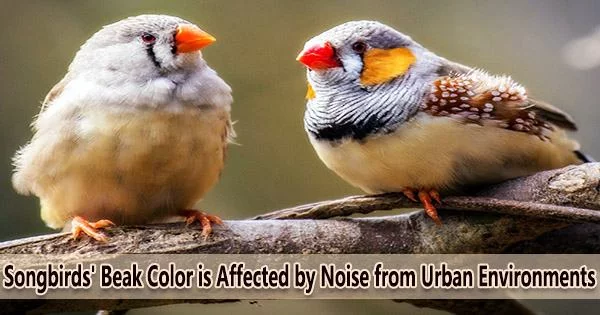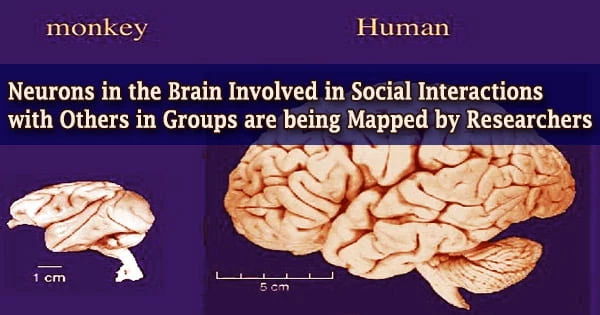An increasing number of people are worried that anthropogenic noise has negative consequences on wildlife in urban settings. There are many different frequencies, sound kinds, and amplitudes in urban noise, including startlingly quick onset sounds like those from traffic.
The first study to examine whether exposure to this noise has any impact on a bird’s beak was conducted by Florida Atlantic University. Studies have demonstrated that noise pollution impacts cognitive ability in various animal species, including birds.
For the study, researchers tested a songbird the zebra finch (Taeniopygia guttata). While females are consistently gray, males have multicolored plumage that includes white, black, gray, orange, and brown.
The beaks of males are brilliant red, whereas those of females are orange. Their beak decoration is a secondary sexual characteristic that can communicate a male’s quality and influence a female’s preference for a mate. Beak color also affects dominance hierarchies in male zebra finches.
The FAU researchers carried out two different tests to ascertain the effects of anthropogenic noise on cognition, beak color, and growth in zebra finches because results from other studies have shown inconsistent results. In the first experiment, they tested adult zebra finches on a battery of cognition assays while they were exposed to playbacks of urban noise versus birds tested without noise.
In the second experiment, after growing the adult zebra finches with regular exposure to urban noise, researchers assessed their cognitive ability on the same foraging tasks. They compared their performance to birds raised with exposure to “pink noise” (a type of noise control) or with exposure to the normal sounds of the aviary.
Our finding suggest that urban noise exposure may affect morphological traits, such as beak color, which influence social interactions and mate choice. However, the mechanisms by which noise affects beak ornamentation remain unclear. If traffic noise raises corticosterone levels and corticosterone levels affect beak color, then it is possible that stress is mediating the effects of noise exposure on beak ornamentation.
Rindy C. Anderson
During the first 90 days of life, they also monitored the birds’ development and the pigmentation of their beaks. Once the birds reached adulthood, a battery of cognitive tests were administered to them.
Results of the study, published in the journal Acta Ethologica, showed that urban noises caused the birds to take longer to learn a novel foraging task and to learn an association-learning task.
Urban noise exposure during development had no effect on adult body size or growth rate, but treated males and females had beaks that were less brightly colored in the case of males and more brightly colored in the case of females than untreated birds.
“Our finding suggest that urban noise exposure may affect morphological traits, such as beak color, which influence social interactions and mate choice,” said Rindy C. Anderson, Ph.D., senior author, an associate professor of biological sciences and director of the Behavioral Ecology and Bioacoustics Lab at FAU’s Davie campus within the Charles E. Schmidt College of Science and a member of the FAU Stiles-Nicholson Brain Institute. “However, the mechanisms by which noise affects beak ornamentation remain unclear. If traffic noise raises corticosterone levels and corticosterone levels affect beak color, then it is possible that stress is mediating the effects of noise exposure on beak ornamentation.”
Findings revealed that at day 90, male finches exposed to regular aviary noises had brighter beaks than those in the urban and pink noise treatment groups, whereas female finches in these groups had more reddish-hued beaks.
The beaks of juvenile zebra finches are black and begin to change color at about one month of age, typically reaching adult color at about 65 days old. This is probably the reason why data made before the 90-day time point did not show any effects of urban noise on beak color.
“Further research should investigate the effects of beak ornamentation on social hierarchies and mate selection in urban environments, and test whether social interaction in noisy environments can ameliorate negative effects from urban noise on traits such as problem-solving and neophobia or fear of new things,” said Anderson.
Study co-authors are FAU’s Charlie Daria, a graduate student; and Morgan C. Slevin, a doctoral student, both in the Charles E. Schmidt College of Science.
FAU’s Office of Undergraduate Research and Inquiry, Charles E. Schmidt College of Science, and the Department of Biological Sciences provided funding and logistical support for the study.
















